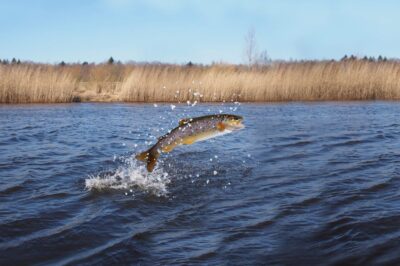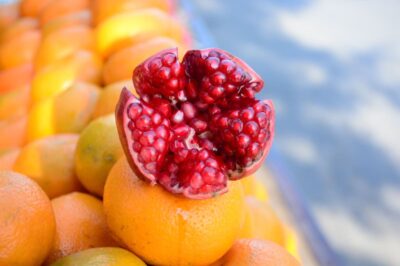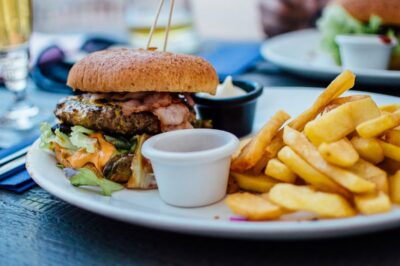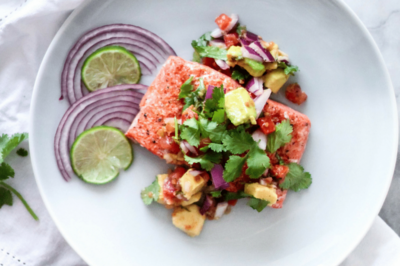In our pursuit of healthy, vibrant lives, so many of us are paying much closer attention to the foods we eat and the products we buy and use every day. One of the ways we navigate the maze of healthy vs. unhealthy foods, and safe vs. unsafe products is by learning to read labels.
While not perfect, the ingredients listed on these labels usually give us enough information to make informed, empowered choices.
But what about foods that don’t have labels? What if the things we need to be mindful of aren’t actually ingredients at all?
When it comes to seafood, this is a big deal, because while the only “ingredient” in a piece of fish is, well, “fish,” it’s likely to be loaded with contaminants that can put our health at risk. And these will never show up on a label.
Contaminants like methyl mercury, PCB’s, antibiotics, and pesticides are commonly found in nearly all types of seafood. Reading that, you might think it’s better to avoid seafood altogether, but that’s not the case, as seafood is a great source of heart healthy and brain healthy omega-3 fatty acids.
Knowing how to navigate the waters of this issue is super important if we’re looking to both optimize our health and reduce our exposure to harmful chemicals… so let’s dive in!
We Love Seafood
In the United States we eat a lot of seafood. According to the National Oceanic and Atmospheric Administration, the average American eats 15.8 pounds of seafood each year, including 3.7 lbs of canned tuna (“U.S. Seafood Consumption Declines Slightly in 2009”). Some of our most popular species of seafood (shrimp, tuna, and salmon) have some of the highest levels of dangerous contaminants in them.
There are a number of issues related to the way seafood is raised or caught that can turn shopping for healthy options into a bit of a challenge, so before getting to the general guidelines and rules to follow, let’s take a look at the key issues.
A Three Course Meal Featuring Wild Halibut
Are You Polluting Our Waterways with Plastic Microbeads?
Mercury In Seafood
Ask anyone about health issues with seafood, and they’ll automatically think “mercury,” the super toxic heavy metal. Mercury is a developmental neurotoxin, meaning it directly interferes with normal brain development, is toxic to the central and peripheral nervous systems, and can lead to developmental delays and learning disabilities in children exposed in utero.
Exposure to mercury can not only affect brain development and functioning, it can also leave us feeling not quite ourselves. Mercury exposure can cause irritability, excitability, temper outbursts, fearfulness/anxiety, restlessness, depression and insomnia. Seafood, in particular tuna, is our primary exposure source to this heavy metal, so it makes sense to pay attention to what we’re eating.
Mercury is released into the environment mostly through industrial activity, where it gets blown into the air or dumped into waterways. From there, it travels around the world, depositing in oceans, on land, and building up inside the bodies of fish.
The larger and older the species of fish, the more mercury it accumulates. Dangerous levels of mercury, enough to warrant seizure by the FDA, can be found in tilefish, swordfish, shark, king mackerel, and our beloved sushi tuna.
These fish should fall on the “never” list, as the risk of mercury exposure outweighs the benefit of consuming seafood.
While canned tuna is lower in mercury than species used for sushi (like bluefin, bigeye, and yellowfin), we consume so much of it that it is our primary exposure source.
To find low-mercury seafood, aim for fish that are smaller, and lower on the food chain, like salmon, mackerel, and sardines.
Pesticides & Antibiotics
Just like with large scale farming of cattle, pigs, and chickens, close quarters breed disease. Fish farming has exploded in the last decade and gained a bad reputation for its rampant use of both pesticides and antibiotics.
In 2009 the non-profit Food & Water Watch produced a report called “Suspicious Shrimp” that looked at the way imported shrimp are raised and consistently found measurable of antibiotics, cleaning agents, pesticides, mouse hair, rat hair, pieces of insects—you name it, it’s in there. They even found pesticides that are banned in the United States due to health risks.
Infestations of sea-lice, little critters that eat the skin and blood of fish, have decimated the farmed salmon industry. Salmon farmers typically combat these infestations with the use of organophosphate pesticides, some of the most toxic pesticides in use. The more densely packed the fish are, the greater the infestation, and the more pesticides are needed. Use of pesticides in the farmed salmon industry have skyrocketed over the last few years, which in turn has created resistant “superlice.”
These issues are enough to steer me clear of farmed seafood like shrimp, salmon and tilapia! Opt for wild-caught species of fish instead. They’re not totally free of contaminants, but they’re a much healthier option.
Imported vs. Domestic
In 2016, Food & Water Watch produced a report titled “Toxic Buffet: How The TPP Trades Away Seafood Safety” that found a whopping 94% of seafood consumed in the United States is imported. They write “these factory farms on water raise hundreds of thousands of tightly packed carp, shrimp, tilapia, crab and catfish in one location in often unhygienic conditions. To combat widespread disease, fish farmers in the developing world that supply the U.S. market often use drugs and chemicals that are banned in the United States.”
They also highlight the fact that only a measly 2% of seafood is inspected. What this means, is that imported shrimp from Vietnam could be also serving up an extra helping of pesticides, antibiotics and drugs.
No thanks! Domestic seafood is nearly always a better choice.
Tips For Eating Safer Seafood
There are three golden rules (plus a bonus tip) when eating seafood
Eat Low on the Food Chain
This means I choose smaller fish like salmon, mackerel, and sardines, while avoiding bigger, longer living species like swordfish, shark, sea bass, and tuna.
If you’re eating tuna a few times a year, I say eat whatever you want, but if you’re a regular seafood eater, be mindful of the species.
Domestic over Imported
Not only do I only choose domestic seafood, I try to seek out sources that are locally caught or harvested – this way I can keep in mind local water conditions, or contamination issues nearby. I’m lucky to live in the Pacific Northwest, where seafood is abundant! I’ll eat wild caught Alaskan salmon over imported farmed Scottish salmon any day.
Wild over Farmed
Wild caught fish, provided they are sustainably caught, are a healthier choice than farmed in most cases. Farmed fish can not only have a huge negative impact on the environment, but can serve up a uninvited side of toxins.
Newer, more progressive farmed seafood operations are starting to take a smarter look at their industry, working towards creating a model that’s both sustainable and healthy, and that doesn’t fall into the cycle of overcrowding, disease, and pesticides. Seek these out just like you would a local organic dairy farm: visit the farm, and ask questions.
Check Out Some of the Fish Guides Out There
Guides like the Monterey Bay Aquarium’s Seafood Watch, and the Environmental Defense Fund’s Seafood Selector. These guides typically look seafood from the perspective of sustainability rather than health, so you often have to take their recommendations a step further.
Seafood doesn’t have to be scary, but it should be approached with a degree of caution. What we’re looking for is the balance between healthy, sustainable, and delicious!
References
Crinnion, Walter J. “Environmental medicine, part three: long-term effects of chronic low-dose mercury exposure.” Alternative medicine review: a journal of clinical therapeutic 5.3 (2000): 209-223.
Gilbert, Steven G., and Kimberly S. Grant-Webster. “Neurobehavioral effects of developmental methylmercury exposure.” Environmental Health Perspectives 103.Suppl 6 (1995): 135.
“Suspicious Shrimp: The Health Risks of Industrialized Shrimp Production.” Food & Water Watch. 2009. Web.
“Toxic Buffet: How The TPP Trades Away Seafood Safety.” Food & Water Watch. 2016. Web.
World Health Organization. “Exposure to mercury: A major public health concern.” WHO, Public Health and Environment (2007).
“U.S. Seafood Consumption Declines Slightly in 2009.” NOAA – National Oceanic and Atmospheric Administration. N.p., 9 Sept. 2010. Web. May 2017







